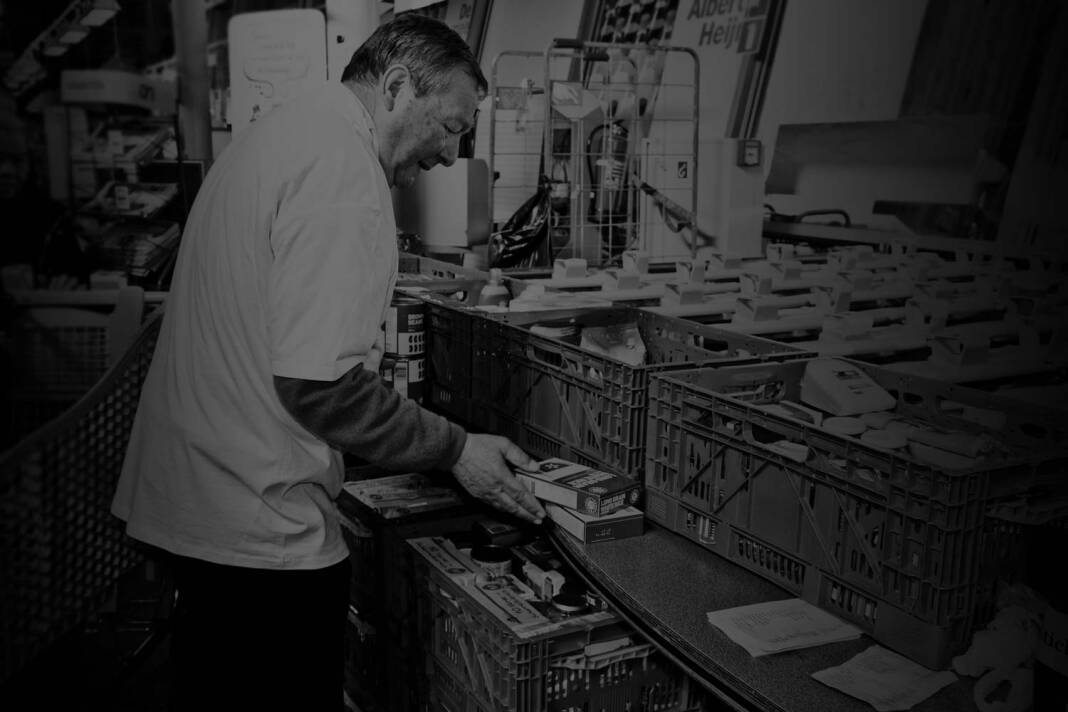© Voedselbank.nl
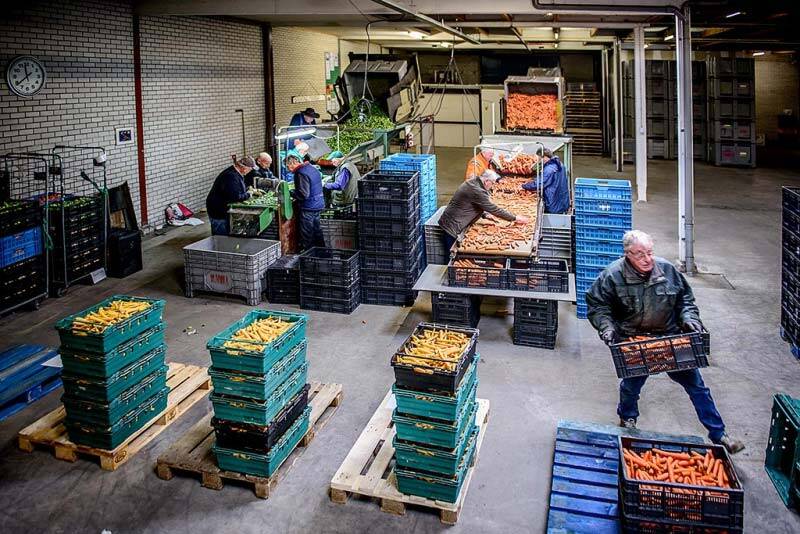
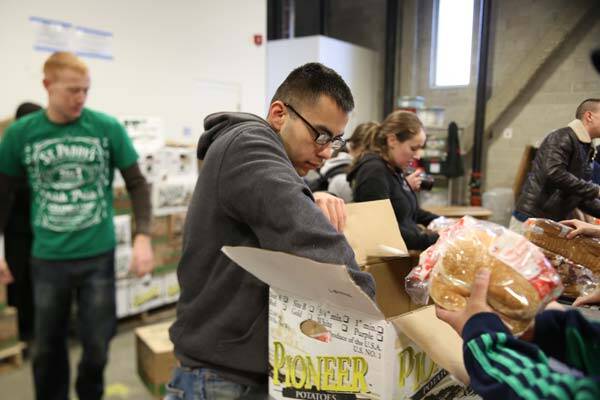
Claire Babineaux-Fontenot, CEO Feeding America, explained that they have set up funding too. For the first six months of this pandemic, the funding network is going to need to raise 1.4 billion dollars to continue providing enough food to those in need.
“From January to May we saw an increase in clients of 5 percent for our 171 food banks. That’s significant, but we’re expecting a 20 to 30 percent increase on the 151,000 already reliant on us. That’ll be a challenge, but we’re ready in case a second wave of the virus hits. Even if we hit the extreme of a 30 percent increase, we’ll pull through. Because we have the support of our partners in industry, the government, our supporters and most importantly our volunteers. Food banks in the surrounding countries can hardly believe we’re able to do all this exclusively with unpaid workers. That is our unique strength.”
Stay safe and give
The concern that followed was that the economic backlash would lead to a rapid growth of clients and that supply wouldn’t be able to keep up. In the short term that hasn’t happened, but it’s a scenario Hillemans is taking into account for the future. “We immediately started working on a scenario wherein we would face shortages and calculated we would need a staggering amount of money to cover those. A communications agency immediately developed the ‘Stay safe and give’ campaign for us at no charge, and we started collecting donations. So far we’ve raised 6.5 million euros (7.1 million dollars) and have the government standing surety for 4 million. This way we are prepared in case a new wave of COVID-19 lands us in a new kind of lockdown where we’ll be unable to hand out food and must rely on giving away supermarket-vouchers.”
Kathryn Strickland, Chief Network Officer of Feeding America
"Because the inventory at the food suppliers such as Walmart or Target were being completely depleted, there was no food left to give. The growing demand also had to do with people who became jobless and kids who lost access to free or reduced price meals at schools. At the start of the corona crisis there was a 40% average increase in demand per week at the Food Bank."
Concerns and strengths
At the start of the crisis, Hillemans had serious concerns about stockpiling behaviour. “That threatened to cut off our most important supply line from supermarkets to food banks. It was touch and go for a few weeks, but the foodservice (which was forcibly shut down) came through for us. From the small bar owner that couldn’t return his surplus to the wholesalers and producers that had nobody left to buy their products, they all found their way to us. We are incredibly grateful for that. The reason they came to us wasn’t a good thing of course, but they did enable us to help the people that were falling through the cracks and struggling to make ends meet. These entrepreneurs shared that sentiment: even if their revenue had collapsed, at least the food was being put to good use.”
Goodwill for food security
The VBN has no budget for communication, but they do have a lot of media and public goodwill. The seriousness of their situation became apparent early on, and the public responded in a big way. “We saw an enormous increase in applications, especially by young people. This came as a surprise. And it also brought with it a new culture and new motivations. The VBN has two goals: feeding those who cannot entirely feed themselves, and preventing food waste. We noticed elderly people are often moved by the first goal, and that young people see reducing food waste as an important driver alongside.”
Joost Scholten & Jaimy van der Linden Xiao-Er Kong
In times of social distancing and isolation we’re in danger of losing sight of those that are already vulnerable. This is why COVID-19 caused a larger than usual amount of unrest at food banks all over the world. In the Netherlands the food banks show how seismic changes in times of crisis give people extra strength.
Kathryn Strickland, Chief Network Officer of Feeding America, the largest hunger relief organisation in America, explained that the US also had to deal with a 60% reduction in volunteers. Their solution to this challenge was partnering with the National Guard and trying to work with touchless drive-through models, as well as maintaining social distancing.
Tom Hillemans

Vice-president Tom Hillemans of Voedselbanken Nederland (VBN), the Dutch association of food banks, is a busy but grateful man. Ever since it became clear the corona crisis would present unprecedented challenges to the organisation comprised of exclusively volunteers, everything has been about change and thinking ahead. “We’re a small country of 17 million people, but our organisation might be one of the largest in the world run exclusively by volunteers. We have 12,000 employees, and none of them are getting paid. That is unique.” That said, keeping an organisation like this running comes with equally unique challenges when dealing with a virus having a disproportionate impact on the elderly. “An important part of our volunteer force is over 70 years old. At some locations as much as fifty percent of our volunteers were no longer able to work in a way that guaranteed their safety according to our own guidelines. That caused a lot of stress in the first few weeks.”
Food banks persevere through corona crisis
The unique strength of and for the people
THE UNIQUE STRENGTH OF AND FOR THE PEOPLE
INTERVIEW
4 min
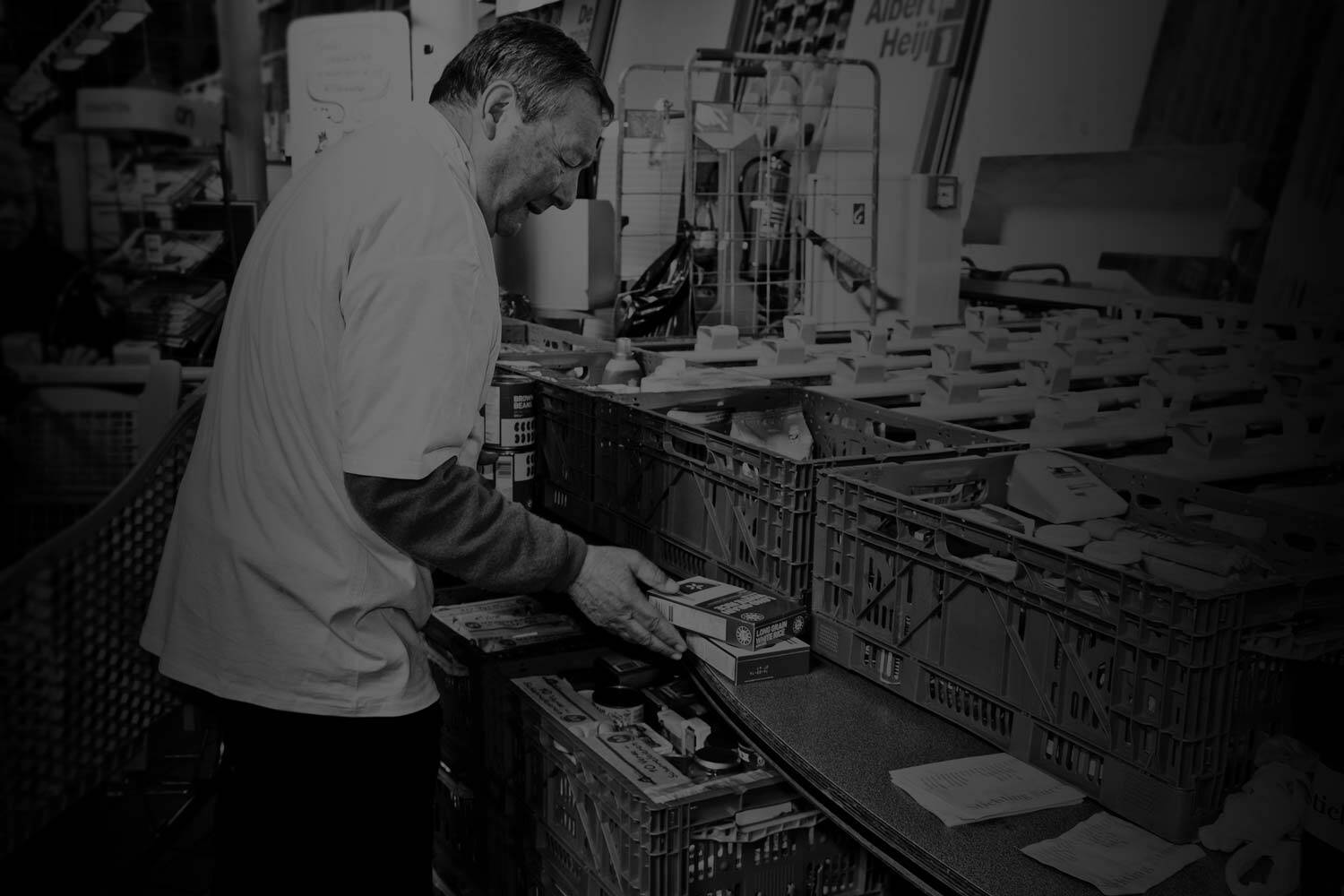
© Voedselbank.nl
Stay safe and give
The concern that followed was that the economic backlash would lead to a rapid growth of clients and that supply wouldn’t be able to keep up. In the short term that hasn’t happened, but it’s a scenario Hillemans is taking into account for the future. “We immediately started working on a scenario wherein we would face shortages and calculated we would need a staggering amount of money to cover those. A communications agency immediately developed the ‘Stay safe and give’ campaign for us at no charge, and we started collecting donations. So far we’ve raised 6.5 million euros (7.1 million dollars) and have the government standing surety for 4 million. This way we are prepared in case a new wave of COVID-19 lands us in a new kind of lockdown where we’ll be unable to hand out food and must rely on giving away supermarket-vouchers.”
Goodwill for food security
The VBN has no budget for communication, but they do have a lot of media and public goodwill. The seriousness of their situation became apparent early on, and the public responded in a big way. “We saw an enormous increase in applications, especially by young people. This came as a surprise. And it also brought with it a new culture and new motivations. The VBN has two goals: feeding those who cannot entirely feed themselves, and preventing food waste. We noticed elderly people are often moved by the first goal, and that young people see reducing food waste as an important driver alongside.”
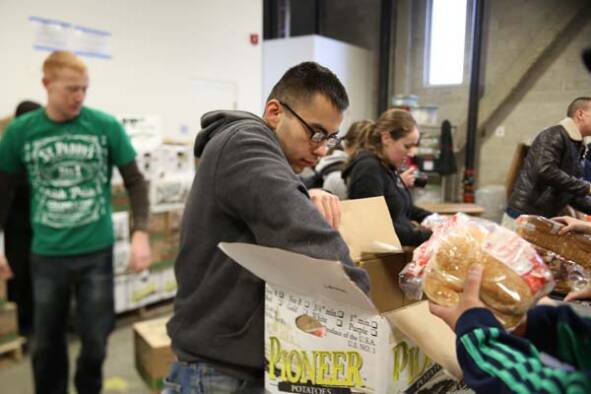
Tom Hillemans

4 min
Claire Babineaux-Fontenot, CEO Feeding America explained that they have set up a funding too. Over the first six months of this pandemic, the funding network is going to need 1.4 billion to provide enough food.
“From January to May we saw an increase in clients of 5 percent for our 171 food banks. That’s significant, but we’re expecting a 20 to 30 percent increase on the 151,000 already reliant on us. That’ll be a challenge, but we’re ready in case a second wave of the virus hits. Even if we hit the extreme of a 30 percent increase, we’ll pull through. Because we have the support of our partners in industry, the government, our supporters and most importantly our volunteers. Food banks in the surrounding countries can hardly believe we’re able to do all this exclusively with unpaid workers. That is our unique strength.”
Kathryn Strickland, Chief Network Officer of Feeding America
"Because the inventory at the food suppliers such as Walmart or Target were being completely depleted, there was no food left to give. The growing demand also had to do with people who became jobless and kids who lost access to free or reduced price meals at schools. At the start of the corona crisis there was a 40% average increase in demand per week at the Food Bank."
Concerns and strengths
At the start of the crisis, Hillemans had serious concerns about stockpiling behaviour. “That threatened to cut off our most important supply line from supermarkets to food banks. It was touch and go for a few weeks, but the foodservice (which was forcibly shut down) came through for us. From the small bar owner that couldn’t return his surplus to the wholesalers and producers that had nobody left to buy their products, they all found their way to us. We are incredibly grateful for that. The reason they came to us wasn’t a good thing of course, but they did enable us to help the people that were falling through the cracks and struggling to make ends meet. These entrepreneurs shared that sentiment: even if their revenue had collapsed, at least the food was being put to good use.”
Kathryn Strickland, Chief Network Officer of Feeding America, an organisation which reliefs nation’s largest hunger, explained that the US also had to deal with a decrease of 60% of the volunteers. Their solution for this decrease was partnering with the National Guard and trying to work with touchless drive through models and maintain social distance.
Vice-president Tom Hillemans of Voedselbanken Nederland (VBN), the Dutch association of food banks, is a busy but grateful man. Ever since it became clear the corona crisis would present unprecedented challenges to the organisation comprised of exclusively volunteers, everything has been about change and thinking ahead. “We’re a small country of 17 million people, but our organisation might be one of the largest in the world run exclusively by volunteers. We have 12,000 employees, and none of them are getting paid. That is unique.” That said, keeping an organisation like this running comes with equally unique challenges when dealing with a virus having a disproportionate impact on the elderly. “An important part of our volunteer force is over 70 years old. At some locations as much as fifty percent of our volunteers were no longer able to work in a way that guaranteed their safety according to our own guidelines. That caused a lot of stress in the first few weeks.”
Food banks persevere through corona crisis
The unique strength of and for the people
Joost Scholten & Jaimy van der Linden Xiao-Er Kong

In times of social distancing and isolation we’re in danger of losing sight of those that are already vulnerable. This is why COVID-19 caused a larger than usual amount of unrest at food banks all over the world. In the Netherlands the food banks show how seismic changes in times of crisis give people extra strength.


